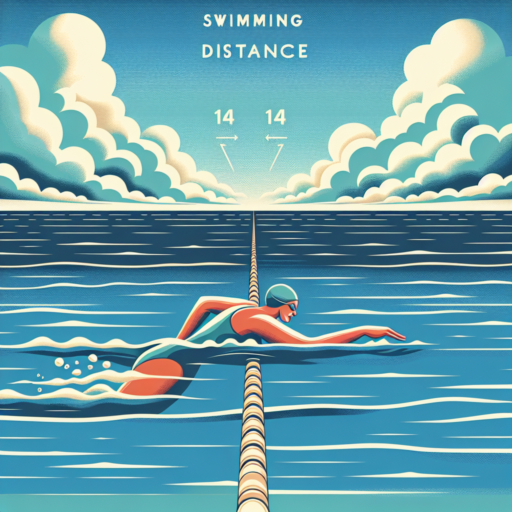How far is 25m swimming?
Understanding the distance of 25m swimming is crucial for swimmers of all levels. Whether you’re a beginner taking your first strokes or an experienced athlete refining your technique, grasping the concept of swimming 25 meters is essential. This standard distance, often referred to as a «short course,» is a common length in many training and competitive pools worldwide.
Swimming 25 meters might seem straightforward, but it encompasses more than just the distance. It represents a significant measurement in the world of swimming, serving as a foundational length for training sets, competition distances, and fitness benchmarks. For swimmers focusing on sprinting, mastering the technique and speed over this distance is key to competitive success.
When considering 25 meters in the context of a swimming pool, it’s generally equivalent to one length of a standard short-course pool. This makes it an accessible and measurable goal for swimmers aiming to track their progress, improve their skills, or set personal milestones. Engaging in 25m swimming can also enhance endurance, build strength, and help in perfecting stroke techniques, making it an integral part of a swimmer’s regimen.
How do you calculate swimming distance?
Calculating your swimming distance is essential for tracking progress and setting personal goals. While the metrics might sound straightforward, effectively measuring how far you swim involves understanding the size of the pool and converting your laps into measurable distances. Whether you’re swimming in an Olympic-sized pool or a smaller, local facility, knowing how to gauge your distance accurately is key.
Understanding Pool Size
Before diving into calculations, it’s important to recognize the standard lengths of pools. Most competitive swimming pools are either 25 meters (short course meters or SCM), 25 yards (short course yards or SCY), or 50 meters (long course meters or LCM). By identifying the length of your pool, you can accurately determine how laps translate into distance. For instance, one lap in a 25-meter pool is 25 meters, while in a 50-meter pool, it would be 50 meters.
Calculating your swimming distance can be as simple as multiplying the number of laps by the pool length. For example, if you swim 20 laps in a 25-meter pool, your total distance would be 500 meters. It’s essential, however, to maintain a record of your laps, which might involve using a waterproof lap counter or fitness tracker designed for swimming. These tools can greatly enhance accuracy by keeping a detailed count of your laps, thus improving the precision of your distance tracking.
Additionally, for open water swimmers, distance calculation can involve more sophisticated GPS tracking technology. Modern sports watches and swim trackers offer GPS functionality, providing accurate measurements of the distance covered in lakes, rivers, or oceans. This advanced technology allows swimmers to focus on their performance without the need to count laps or estimate distances manually.
No se han encontrado productos.
How many lengths of a 25m pool is a kilometer?
Understanding the calculation of distances in swimming is crucial for swimmers of all levels, especially when training for specific goals. When considering a standard 25-meter pool, the question of how many lengths equate to a kilometer is common among beginners and seasoned swimmers alike. This is not just a question of math, but also an important aspect of planning and executing a swimming workout efficiently.
Swimming a kilometer is a significant milestone for many swimmers. To break it down, a kilometer is equivalent to 1,000 meters. Given that a single length of a 25-meter pool is precisely that, 25 meters, one needs to swim 40 lengths (back and forth) to cover a kilometer. This simple calculation can help swimmers set measurable goals and monitor their progress over time. Therefore, in a 25m pool, 40 lengths are required to swim a full kilometer.
It’s important for swimmers to note the significance of counting laps accurately and understand how this fits into their overall training scheme. Being aware of these numbers not only helps in achieving distance-based objectives but also enhances a swimmer’s endurance and capability to handle longer swims. For competitive swimmers, this knowledge is crucial in strategizing race plans and pacing strategies over races of various distances.
How many lengths is a 10km swim?
Understanding the lengths involved in a 10km swim is crucial for swimmers aiming to grasp the scale of this endurance challenge. Normally, swimming pools vary in size, with 25 meters and 50 meters being the most common lengths for competitive swimming. Knowing the exact number of lengths required for a 10km swim helps in setting training milestones and in preparation for competitive races such as marathons and open-water events.
Lengths in a 25-meter pool
In a 25-meter pool, a 10km swim equates to 400 lengths. This calculation comes from the fact that 10,000 meters (10km) divided by 25 meters equals 400. Swimming this distance requires not only physical strength and stamina but also mental fortitude. Swimmers must track their laps efficiently while maintaining technique and speed throughout the entire distance.
Lengths in a 50-meter pool
For those training or competing in a 50-meter pool, a 10km swim entails 200 lengths of the pool. This halved number of lengths, in comparison to a 25-meter pool, allows swimmers to focus more on maintaining pace without the frequent turns. It’s a preferred choice for many long-distance swimmers due to less energy expended on flip turns, though it still presents an immense test of endurance and willpower.



